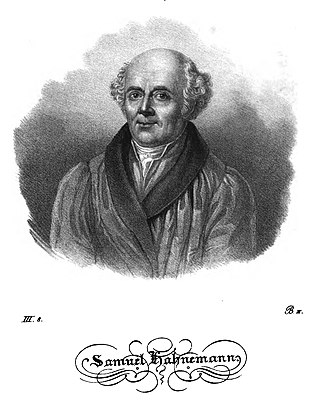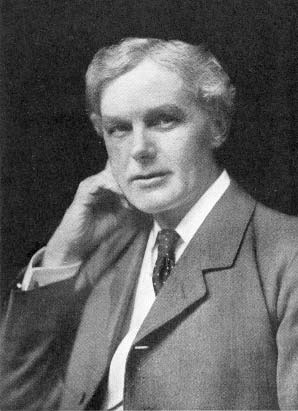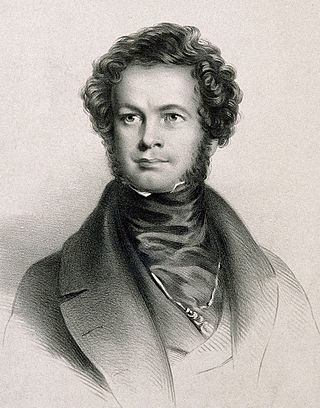
Homeopathy or homoeopathy is a pseudoscientific system of alternative medicine. It was conceived in 1796 by the German physician Samuel Hahnemann. Its practitioners, called homeopaths or homeopathic physicians, believe that a substance that causes symptoms of a disease in healthy people can cure similar symptoms in sick people; this doctrine is called similia similibus curentur, or "like cures like". Homeopathic preparations are termed remedies and are made using homeopathic dilution. In this process, the selected substance is repeatedly diluted until the final product is chemically indistinguishable from the diluent. Often not even a single molecule of the original substance can be expected to remain in the product. Between each dilution homeopaths may hit and/or shake the product, claiming this makes the diluent "remember" the original substance after its removal. Practitioners claim that such preparations, upon oral intake, can treat or cure disease.

Christian Friedrich Samuel Hahnemann was a German physician, best known for creating the pseudoscientific system of alternative medicine called homeopathy.
Sir John Weir was a Scottish physician and homeopath who served as Physician Royal to several twentieth century monarchs.

John Henry Clarke was an English classical homeopath. He was also, arguably, the highest profile anti-Semite of his era in Great Britain. He led The Britons, an anti-Semitic organisation. Educated at the University of Edinburgh, he received his medical degree in 1877.
Drexel University College of Medicine is the medical school of Drexel University, a private research university in Philadelphia, Pennsylvania. The medical school represents the consolidation of two medical schools: Hahnemann Medical College, originally founded as the nation's first college of homeopathy, and the Woman's Medical College of Pennsylvania, the first U.S. medical school for women, which became the Medical College of Pennsylvania when it admitted men in 1970; these institutions merged in 1993, became affiliated with Drexel University College of Medicine in 1998, and were fully absorbed into the university in 2002. With one of the nation's largest enrollments for a private medical school, Drexel University College of Medicine is the second most applied-to medical school in the United States. It is ranked no. 83 in research by U.S. News & World Report.

Hahnemann University Hospital was a tertiary care center in Center City Philadelphia. It was the teaching hospital of Drexel University College of Medicine. Established in 1885, it was for most of its history the main teaching hospital associated with its namesake medical school, Hahnemann Medical College and Hospital, founded in 1848 and named for Samuel Hahnemann, the founder of homeopathy. Hahnemann University Hospital was fully accredited by the Joint Commission on Accreditation of Healthcare Organizations.

Homeopathy is fairly common in some countries while being uncommon in others. In some countries, there are no specific legal regulations concerning the use of homeopathy, while in others, licenses or degrees in conventional medicine from accredited universities are required.
In homeopathy, homeopathic dilution is a process in which a substance is diluted with alcohol or distilled water and then vigorously shaken in a process called "succussion". Insoluble solids, such as quartz and oyster shell, are diluted by grinding them with lactose (trituration). The founder of homeopathy, Samuel Hahnemann (1755–1843), asserted that the process of succussion activated the "vital energy" of the diluted substance, and that successive dilutions increased the "potency" of the preparation, although other strands of homeopathy disagreed.

Frederic Hervey Foster Quin was the first homeopathic physician in England.

The Royal Waterloo Hospital for Children and Women was a hospital located on the corner of Waterloo Bridge Road and Stamford Street near Waterloo station in London, England. The current building was designed by noted ecclesiastical architect Sir Charles Nicholson at a cost of £45,000 and included an outpatients' department and inpatient accommodation of 90 beds. The hospital closed in 1981 and is now a dormitory building for the London branch of the University of Notre Dame.

The Samuel Hahnemann Monument, also known as Dr. Samuel Hahnemann, is a public artwork dedicated to Samuel Hahnemann, the founder of homeopathy. It is located on the east side of Scott Circle, a traffic circle in the northwest quadrant of Washington, D.C. The Classical Revival monument consists of an exedra designed by architect Julius Harder and a statue sculpted by Charles Henry Niehaus, whose works include the John Paul Jones Memorial in Washington, D.C., and several statues in the National Statuary Hall Collection. The monument is significant because Hahnemann is the first foreigner not associated with the American Revolution to be honored with a sculpture in Washington, D.C.
The UK National Health Service has historically supported a number of hospitals which were created to primarily offer homeopathic treatments. Following declining support within the NHS for homeopathy as a treatment, all but one have now either closed down or substantially modified their activities.

Bristol Homeopathic Hospital was a hospital in the city of Bristol in southwest England, specialising in homeopathic treatments. The Hampton House building, designed by George Oatley, is a Grade II listed building. Hampton House is now being used as the student health service for Bristol University, offering a range of services to the students of the university.

The NHS Centre for Integrative Care, formerly the Glasgow Homeopathic Hospital, is an NHS treatment centre specialising in holistic treatments, including the use of homeopathy, on the Gartnavel Hospital campus in Glasgow, Scotland. It is managed by NHS Greater Glasgow and Clyde.

Tunbridge Wells Homeopathic Hospital was a former NHS hospital in Tunbridge Wells, England, that specialised in homeopathic treatments.
Hahnemann Hospital could mean:

National Homeopathic Hospital is a defunct American hospital. Located in Washington, D.C., it was established in 1881, and became Hahnemann Hospital in 1956.

Hahnemann Medical College of the Pacific was an American homeopathic medical school in San Francisco, California. It was established in 1881 as Hahnemann Medical College, with the first graduating class in 1884. During the period of 1888–1902, it was known as Hahnemann Hospital College of San Francisco. Its last name change, 1902–1915, was to Hahnemann Medical College of the Pacific.



















